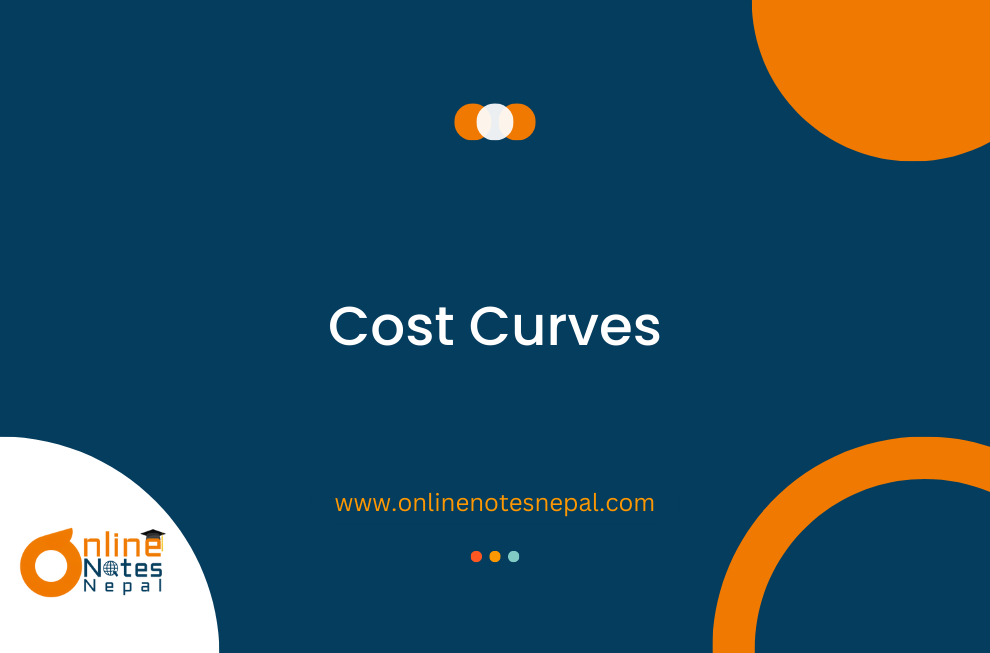Published by: Sayuja Koirala
Published date: 30 Jul 2024

To produce goods and services, a firm uses raw materials and factors of production which are called inputs. The expenditure incurred by these inputs is called cost. Cost of production is a component of determining the profit of a firm. At a certain price of a commodity, the low cost of production results in high profit and the high cost of production results in low profit or loss.
There are various kinds of costs. Some of them can be explained as follows:
Fixed cost:
Fixed cost includes the expenses incurred by the fixed factors of production. They are those factors which cannot be changed in the short run. The cost incurred by the fixed factor of production remains constant at all levels of output. It includes rent of the business premises, interest on capital, salaries of permanent employees, depreciation of machines and furniture, etc. It is also known as an overhead cost.
Variable cost:
Variable cost includes the expenses incurred by the variable factors of production. They are the factors that can be changed by the change in production even in the short run. It includes the cost of raw materials, the wage of workers, the cost of power and fuel, etc. If the quantity of production increases the cost will increase and vice versa. When the output is zero, the variable cost will be zero.
Short-run cost:
The short run is a period in which the firm can vary its output by varying only the amount of variable factors such as labour and raw materials. In the short run, fixed factors such as capital, equipment, top-level management, etc can not increase its output by enlarging the existing plant and building.
Long run Cost:
The long run is a period in which all the factors of production are variable. Thus, in the long run, the output can be increased by increasing fixed factors of production like a plant, machinery, building, etc as well as variable factors.
Explicit Cost:
An explicit cost is an immediate instalment made to others throughout maintaining a business. For example, wage, lease, and materials. The actual cost, likewise called Real Cost is the cost acquired by the firm to make all the physical installments and the legally binding commitments. In this way, all the cash costs recorded in the books of records are, for down-to-earth purposes, the real or explicit cost.
Implicit Cost:
An Implicit cost is any cost that has just happened but hasn't appeared or been announced as a different cost. The Implicit certain ascribed, or imputed cost can be named as a cost that comes about because of utilizing the advantage for one's particular use as opposed to leasing or offering it, or the salary is inevitable of not deciding to work.
Fixed cost refers to the expenditure incurred by the producer on the fixed factor of production. It is also known as the total cost made on the fixed factor. In the short run, they do not change with a change in output. It remains fixed although the fixed factors are increased or decreased to alter the output. It can be explained with the help of the following schedule and diagram:
| Outputs (in units) | Total fixed cost (in Rs.) |
| 0 | 30 |
| 1 | 30 |
| 2 | 30 |
| 3 | 30 |
| 4 | 30 |
| 5 | 30 |
In the above diagram, we can see that the TFC curve is parallel to the x-axis because fixed cost remains constant at all levels of output in the short run.
Variable cost refers to the cost incurred by the variable factors of production. It does not remain constant like the fixed cost at different levels of output. Whenever the output increases or decreases the variable cost will also increase or decrease. It can be explained with the help of the following schedule and diagram:
| Output (in units) | Total variable cost |
| 0 | 0 |
| 1 | 20 |
| 2 | 30 |
| 3 | 45 |
| 4 | 80 |
| 5 | 145 |
In the above figure, we can see that the TVC curve increases at a decreasing rate at first and then increases at an increasing rate after some units of production because of the applicability of the law of variable proportion in the short run.
Total cost is defined as the total monetary expenditure incurred in the production process. It is the sum of the fixed cost and total variable cost.
Symbolically,
TC=TVC + TFC
It can also be explained with the help of the following schedule and diagram:
In the above figure, costs are shown along the y-axis and outputs are shown along the x-axis. TFC is parallel to the x-axis because it is constant at all levels of output. TVC is increasing as the output is increasing. TC is also increasing because variable cost is also included in it. The nature of TC and TVC are similar. They are parallel to each other. The only difference is that TVC starts from the origin and TC starts above the origin.